Home » Catastrophic Talar Bone Loss from High Velocity Trauma Treated with Structural Tricorticate Fibula Autograft, Compression Frame, and Midfoot Distraction Arthroplasty
Case Report | Vol. 5, Issue 1 | Journal of Clinical Medical Research | Open Access |
Catastrophic Talar Bone Loss from High Velocity Trauma Treated with Structural Tricorticate Fibula Autograft, Compression Frame and Midfoot Distraction Arthroplasty
Gordon Slater1*

1Department of Regenerative Medicine and Biotechnology University of Technology Sydney, Ultimo NSW Sydney, Australia
2MBiomedEng (Hons), University of Technology Sydney, Ultimo NSW Sydney, Australia
*Correspondence author: Gordon Slater, MBBS FRACS FA OrthoA, Clinical Private Practice, Potts Point NSW Sydney, Australia; Email: [email protected]
Citation: Slater G, et al. Catastrophic Talar Bone Loss from High Velocity Trauma Treated with Structural Tricorticate Fibula Autograft, Compression Frame, and Midfoot Distraction Arthroplasty. Jour Clin Med Res. 2024;5(1):1-9. http://dx.doi.org/10.46889/JCMR.2024. 5110
Copyright© 2024 by Slater G, et al. All rights reserved. This is an open access article distributed under the terms of the Creative Commons Attribution License, which permits unrestricted use, distribution, and reproduction in any medium, provided the original author and source are credited.
| Received 13 Mar, 2024 | Accepted 03 Apr, 2024 | Published 11 Apr, 2024 |
Abstract
Osteonecrosis is caused by the interruption of subchondral blood supply and can affect various bones in the human body. This case study details the treatment of a 37-year-old male with comminuted foot fractures, post-traumatic osteonecrosis, and previous surgeries who regained full weight-bearing ability and returned to work duties through a variety of techniques.
Following the diagnosis of the disease through MRI scans, a surgical plan was devised for the patient:
- Pan-Talar Fusion Anterior Plate
- Reflect Anterior Flap
- Fibula Structural Autograft, lateral approach
- Complex frame compress ankle and distract mid-foot
- Distraction arthroplasty of midfoot
The patient successfully achieved full weight-bearing and returned to work 11 months post-surgery. X-rays confirmed progressive bone healing and no hardware complications.
This case demonstrates a successful treatment approach for complex hindfoot fractures, enabling full weight-bearing and return to work. Further research is needed to explore long-term outcomes and potential improvements in the surgical technique.
Keywords: Osteonecrosis; Comminuted Fractures; Pantalar Arthrodesis; Structural Bone Graft; Compression; Distraction Arthroplasty; Synthetic Bone Graft; Regenerative Medicine
Introduction
Osteonecrosis is a degenerative bone disease which is characterized by the death of the bones cell because of the interruption of the subchondral blood supply [1]. This disease typically affects the epiphysis of the long bone at weight bearing joints, common areas being the femoral head, knee, talus, lunate, and humeral head [2,3]. Of a study cohort consisting of approximately 3.5 million adults, the 10-year risk of osteonecrosis is 0.4% with an incidence rate of 4.7 cases per 10000 person/years [4]. The interruption of blood supply which can cause osteonecrosis stems from both traumatic (injury-based) and nontraumatic [5]. Individuals with elevated risk associated with osteonecrosis consist of trauma to certain bones, high alcohol consumers, corticosteroid users of high and long-term dosages, smokers, and congenital hip dislocation [6]. When observing the effects of osteonecrosis, it leads to cell death, which may cause fractures and structural collapsing of the affected area [7]. With the degradation of the affected areas, the quality of life of the patients are harshly affected within a variety of studies [8]. The current state for treatments regarding osteonecrosis is controversial, as there is no definitive treatment for the disease [9]. The most common symptoms of osteonecrosis are pain in the area and inability to bear weight. But histological damage to the affected joint may occur before any symptoms [10]. Due to the delayed onset of symptoms, MRI’s can detect osteonecrosis earlier compared to X-Rays [11]. To categorize fractures of the talus, the Hawkins classification system is used. This is especially useful to judge when fractures can lead to osteonecrosis due to the interruption of blood supply. Lower numbers (Hawkins I and II) represent undisplaced or minimally displaced fractures with a lower risk of osteonecrosis (around 0-50%). Conversely, higher numbers (Hawkins III and IV) indicate more severe fractures with greater displacement and a significantly higher risk (up to 100%) [12]. From this classification, fracture severity can be assessed to guide treatment decisions that can minimize osteonecrosis (Fig. 1).
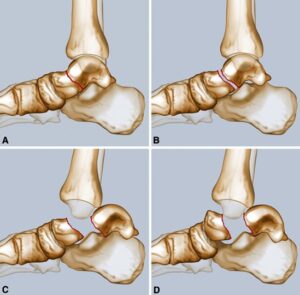
Figure 1: Type 1 (A), Type 2 (B), Type 3 (C), and Type 4 (D) Fractures according to Hawkin’s classification.
Ethical Statement
The project did not meet the definition of human subject research under the purview of the IRB according to federal regulations and therefore was exempt.
Case Report
A 37-year-old male had a motorcycle accident in January 2022, which resulted in multiple fractures of the right ankle, including comminuted fractures of the metatarsals. The accident caused a substantial soft tissue injury to the ankle, and the posterior part of the talus was ejected from the body to the road. In the initial stabilization of the injury, a simple external fixator was applied [13]. Complications for external fixations may include pin site infection, osteomyelitis, frame or pin/wire failure or loosening, malunion, non-union, soft-tissue impalement, neurovascular injury, compartment syndrome, or refracture around pin [14]. Bone cement was used to replace the ejected talus is a respected technique for infection related diseases due to being technically simple, satisfactory outcomes, and fast recovery being able to ambulate with full weight after surgery [15]. In Fig. 2, an X-Ray 3-month post-surgery shows a cement prosthesis in the posterior half of the talus. K-wire is noted across the fourth and fifth metatarsals. Healing fracture noted in the mid-portion of the fourth metatarsal and at the neck of the fifth metatarsal. Healing fracture in the distal shaft of the third metatarsal. Normal alignment of the hindfoot, midfoot and forefoot joints. Extensive soft tissue swelling around the ankle joint extending into the dorsal portion of the foot.
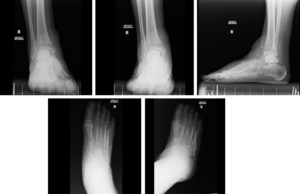
Figure 2: X-Ray post 3 months of initial surgery.
Investigation of the Loss of Bone Talus and Anterior Talar Osteonecrosis
On presentation, the patient was presented with an antalgic gait and limited weight bearing ability. Chronic swelling pain was present on weight bearing. A substantial anterior free flap was noted at the anterior aspect of the ankle. The midfoot was stiff to examination. An MRI was requested to assess the extent of the disease. Notes from the MRI; uncemented talar neck and head is malaligned with respect to the cemented portion with direct bony impingement between the dorsal talar neck and tibia. Associated marked osteodegenerative changes involve the tibial plafond is prominent synovitis projecting from the anterior ankle joint. There is also evidence of osteonecrosis with a subchondral fracture involving the talar head. Marked oedema involves the flexor hallux longus tendon muscle belly of uncertain cause. No intact ATFL, CFL, or deltoid ligament is identified. The surgical plan is:
- Pan-Talar Fusion Anterior Plate
- Reflect Anterior Flap
- Fibula Structural Autograft, lateral approach
- Complex frame compress ankle and distract mid-foot
- Removal of K-wires metatarsal 4 and 5
Pantalar Fusion, Structural Autograft, Ankle Compression, Mid-foot Distraction and Synthetic Bone Graft
Pantalar arthrodesis is used in advanced reconstructive cases such as pantalar arthritis Charcot disease, trauma, and failed total ankle arthroplasty [17-19]. Pantalar arthrodesis have been used for patients which have instability issues, traumatic events and failed ankle replacements [20-22]. The patient has an amalgamation of these indications being the perfect candidate for a pantalar arthrodesis. Other forms of arthrodesis would not fuse effectively for an injury of this calibre. An alternative to the treatment is amputation [23]. Amputations however will cause quality of life issues for the patient along with an inability to return to work [24]. The anterior flap was reflected to allow a trans fibular approach to the cement space and protect the flaps vascular pedicle [25]. Distal 10 cm Fibula was harvested as a tricorticate structural autograft and impacted into the defect left by the removal of the spacer. Further graft was placed as an onlay graft, synthetic graft was then impacted. A superior ankle anterior plate (Integrant in Fig. 3) was provisionally placed with initial tibial fixation. A section of fibula graft was internally fixed as an only graft from the tibia to the calcaneous and is totally fixed with 2 x 4 mm screws, good fixation was obtained. A synthetic graft (Integrant’s GraftIt) was placed medially with the defect and supported with Integrant’s FuseIt. A complex frame was placed (Integrant’s FrameIt in Fig. 4) allowed hindfoot compression and distraction of the stiff midfoot. Post operative bleeding occurred 2 days post-op. A CT angiogram revealed a pseudoaneurysm of the posterior tibial artery. The pseudoaneurysm was repaired via a separate procedure requiring frame removal.

Figure 3: X-Rays following pan-talar arthrodesis, structural autograft, and external fixator.

Figure 4: Integrant’s FrameIt external fixator used to complete distraction arthroplasty.
An X-Ray after the initial removal of the FrameIt can be seen in Fig. 5. The X-Ray shows interval partial resection of distal fibula with grafting to replace the talar body and arthrodesis of ankle joint from calcaneum to the tibia. K-wire runs through fourth and fifth metatarsal along with extensive soft tissue swelling around the ankle. This required removal of the frame and repair. The foot fell from the plate which was corrected with the reapplication of the frame. The foot can be seen to fall plantagrade from the plate. This was corrected by the reapplication of the frame.
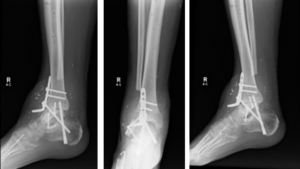
Figure 5: X-Ray after initial removal of external fixator.
2 weeks after the X-Ray, the FrameIt was then adjusted to be used as a distractor for the mid-foot and compressor at the ankle joint. The distraction of the mid-foot can help the chondrogenesis. 2 months following X-Ray showed satisfactory progress of the hindfoot function and distraction of the midfoot seen in Fig. 6 and Fig. 7 shown the frame removal at this point. The screws were added into the distal plate seen in image guidance. 6.5 mm screw and 4 mm screw were added.
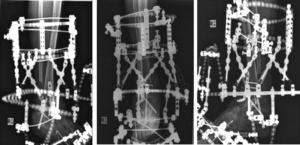
Figure 6: X-Ray 2 months following ankle compression.

Figure 7: X-Ray following 2nd frame removal and internal fixation.
4 months post operation the patient returned to work, with the structural autograft and internal fixation holding well seen within the X-Ray in Fig. 8 along with fusion confirmation from a CT scan. The patient progressed to full weight bearing in normal shoes and feels no pain.
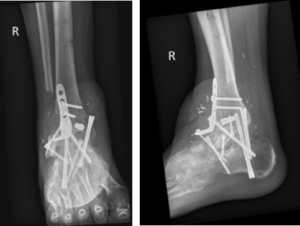
Figure 8: X-Ray 2 months post internal fixation.
11 months post operation, findings of the X-Ray show no hardware complications and bony union is progressing from the previous study. Small distal segment of the fibula partially fusing with the tibia and calcaneus. Bony fragments are noted projected over the posterior ankle. This X-Ray is seen in Fig. 9. Overall, it demonstrates good consolidation of structural autograft, and the patient is back to work with full duties in heavy industry.
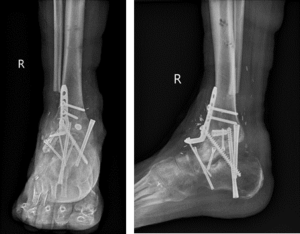
Figure 9: X-Rays of patient 11-month post operation.
Discussion
Pan talar fusion has a high failure rate with an overall complication rate of 18.2% whereas the overall non-union rate was 10.6% [26]. Significant loss of talus height leads to a short leg and resultant limp. Solutions to solve the catastrophic bone loss are limited. Amputation and prosthesis are an alternative solution, but they have poor outcomes as they don’t allow normal full functions of the limb and expensive along with low integration rates [27]. The patient was also against amputation and prosthesis to not affect their quality of life and be able to return to work. Structural allograft failure rates are 20% in the literature [28]. We have used fibula structural autografts for many years with good effects to salvage failed total ankle replacements [29]. Due to the size of the synthetic hydroxyapatite graft (Integrant’s GraftIt) was used with a FuseIt structural plug to protect the graft while it consolidated [30].
Joint distraction arthroplasty allows joint regeneration with modest increase in movement [31]. If our aim is patient satisfaction, then sophisticated regenerative techniques are required to maximise functional outcomes in complex hindfoot trauma. This is the first case reported where compression has been combined with distraction arthroplasty to regenerate injured joints.
Conclusion
Hindfoot trauma in a young fit male remains a challenging issue to solve. Combining a solid platform to walk on with flexibility to ambulate and adjust to changes in terrain need to be achieved. A complex hexagonal framing system allows a combination of compression (for hindfoot fusion) and distraction for midfoot regeneration. This case once again highlights the versatility of distraction arthroplasty. A limitation to this study is the unique nature of the procedure and being the first documented procedure of its kind. Hence, the effects of the procedure need to be observed with a longer follow up period. To accommodate for this, the patient will be followed up in the future. We would also require multiple studies of this procedure to assess the viability upon different patients. Further studies are required but current outcomes are very positive.
Conflict of Interests
Dr. Gordon Slater has a pecuniary interest in Integrant a biotechnology company and Regen U clinics where he actively advises on treatment protocols and implant design.
Acknowledgement
Acknowledge those who provided technical support during the study.
Financial Disclosure
No funding was not involved in the manuscript writing, editing, approval or decision to publish.
Authors Contribution
Application of technique to treat Pantalar Arthrodesis and Synthetic Bone Graft: Dr Gordon Slater
Treated patient with technique: Dr Gordon Slater
Analyzed the results of the study: Dr Gordon Slater/ Mr Zadane Bachmid
Writing of the paper: Mr Zadane Bachmid
Proofreading/Editing of the paper: Dr Gordon Slater
Data Availability
All authors had access to the data and a role in writing the manuscript. All data generated or analyzed in this study are included in this article. Access to data is possible with permission from the responsible author.
Consent for Publication
Informed consent was obtained from the patient for publication of this case report and is stated in the manuscript.
Author’s Contribution
All authors contributed equally for this paper.
References
- Matthews AH, Davis DD, Fish MJ, Stitson D. Avascular necrosis. InStatPearls. StatPearls Publishing. 2023.
- Lespasio MJ, Sodhi N, Mont MA. Osteonecrosis of the hip: a primer. The Permanente J. 2019;23.
- Teimouri M, Motififard M, Hatami S. Etiology of femoral head avascular necrosis in patients: A cross-sectional study. Advanced Biomedical Res. 2022;11(1):115.
- Bergman J, Nordström A, Nordström P. Epidemiology of osteonecrosis among older adults in Sweden. Osteoporosis Int. 2019;30:965-73.
- NIH Osteonecrosis. National Institute of Arthritis and Musculoskeletal and Skin Diseases. 2017.
- Chang C, Greenspan A, Beltran J, Gershwin ME. Osteonecrosis. Kelley and Firestein’s Textbook of Rheumatol. 2017:1764.
- George G, Lane JM. Osteonecrosis of the femoral head. JAAOS Global Research & Rev. 2022;6(5):e21.
- Bensi C, Giovacchini F, Lomurno G, Eramo S, Barraco G, Tullio A. Quality of life in patients affected by medication-related osteonecrosis of the jaws: A systematic review. Oral Surgery, Oral Medicine, Oral Pathology and Oral Radiology. 2021;132(2):182-9.
- Alexiades M. Osteonecrosis of the Knee: An Overview. Hospital for Special Surgery. 2023.
- Chang C, Greenspan A, Gershwin ME. The pathogenesis, diagnosis and clinical manifestations of steroid-induced osteonecrosis. J Autoimmunity. 2020;110:102460.
- Garrick N. Osteonecrosis: Diagnosis, treatment, and steps to take. national institute of arthritis and musculoskeletal and skin diseases. 2017. [last accessed on: April 4, 2024]
https://www.niams.nih.gov/health-topics/osteonecrosis/more-info
- Alton T, Patton DJ, Gee AO. Classifications in brief: the Hawkins classification for talus fractures. 2015.
- Gaudinez RF, Mallik AR, Szporn M. Hybrid external fixation of comminuted tibial plateau fractures. Clinical Orthopaedics and Related Research®. 1996;328:203-10.
- Hadeed A, Werntz RL, Varacallo M. External fixation principles and overview. 2019.
- Kim DH, Kim W, Choi Y. Management of talar lesions with cement augmentation and autologous bone graft. J Orthopaedic Surg. 2022;30(3):10225536221131159.
- Wallace MT, Henshaw RM. Results of cement versus bone graft reconstruction after intralesional curettage of bone tumors in the skeletally immature patient. J Pediatric Orthopaedics. 2014;34(1):92-100.
- Quill GE. Tibiotalocalcaneal and pantalar arthrodesis. Foot Ankle Clin. 1996;1(1):199-210.
- Chawla S, Brage M. Pantalar Arthrodesis. Foot and Ankle Clinics. 2022;27(4):883-95.
- Donegan RJ, Blume PA. Current concepts in pantalar arthrodesis. Podiatry Today. 2014;28(1).
- Rana B, Patel S. Results of ankle and hind foot arthrodesis in diabetic Charcot neuroarthropathy-a retrospective analysis of 44 patients. J Clin Orthopaedics and Trauma. 2021;23:101637.
- Herscovici Jr D, Sammarco GJ, Sammarco VJ, Scaduto JM, Scaduto JM. Pantalar arthrodesis for post-traumatic arthritis and diabetic neuroarthropathy of the ankle and hindfoot. Foot Ankle Int. 2014;32(6):581-8.
- Narayana Gowda BS, Kumar JM. Outcome of ankle arthrodesis in posttraumatic arthritis. Ind J Orthopaedics, 2012;46(3):317-20.
- Backus JD, Ocel DL. Ankle arthrodesis for talar avascular necrosis and arthrodesis nonunion. Foot and Ankle Clinics. 2019;24(1):131-42.
- Puranik AK, Maity S, Meena SP, Santra A, Lodha M, Badkur M, et al. Quality of life of patients with major amputations in the tertiary care center of western rajasthan: a prospective observational study in 2019-2020. Cureus. 2021;13(12).
- Azaz, B, Shteyer A. Modification of the muco-periosteal flap design in anterior maxillary osteotomies. British J Oral Surg. 1978;15(3):253-8.
- Hermus JP, Van Kuijk SM, Witlox MA, Poeze M, Van Rhijn LW, Arts JJ. Alignment of CCI total ankle replacements in relation to midterm functional outcome and complication incidence. J Foot and Ankle Res. 2023;16(1):34.
- James R, Laurencin CT. Regenerative engineering and bionic limbs. Rare Metals. 2015;34:143-55.
- Bauman RD, Lewallen DG, Hanssen AD. Limitations of structural allograft in revision total knee arthroplasty. Clinical Orthopaedics and Related Research®. 2009;467(3):818-24.
- Slater GL, Sayres SC, O’Malley MJ. Anterior ankle arthrodesis. World J Orthopedics. 2014;5(1):1.
- Sharma N, Slater G. Pantalar arthrodesis using the fuse it arthrodesis plug in Charcot. EC Orthopaedics. 2019;10(2):84-9.
- Arshad Z, Aslam A, Abu-Zeinah K, Bhatia M. Distraction arthroplasty in the management of osteoarthritis of the ankle: a systematic review. Foot and Ankle Surg. 2022;28(8):1150-62.
This work is licensed under a Creative Commons Attribution 2.0 International License.
Author Info
Gordon Slater1*

1Department of Regenerative Medicine and Biotechnology University of Technology Sydney, Ultimo NSW Sydney, Australia
2MBiomedEng (Hons), University of Technology Sydney, Ultimo NSW Sydney, Australia
*Correspondence author: Gordon Slater, MBBS FRACS FA OrthoA, Clinical Private Practice, Potts Point NSW Sydney, Australia; Email: [email protected]
Copyright
Copyright© 2024 by Slater G, et al. All rights reserved. This is an open access article distributed under the terms of the Creative Commons Attribution License, which permits unrestricted use, distribution, and reproduction in any medium, provided the original author and source are credited.
Citation
Citation: Slater G, et al. Catastrophic Talar Bone Loss from High Velocity Trauma Treated with Structural Tricorticate Fibula Autograft, Compression Frame, and Midfoot Distraction Arthroplasty. Jour Clin Med Res. 2024;5(1):1-9. http://dx.doi.org/10.46889/JCMR.2024. 5110

